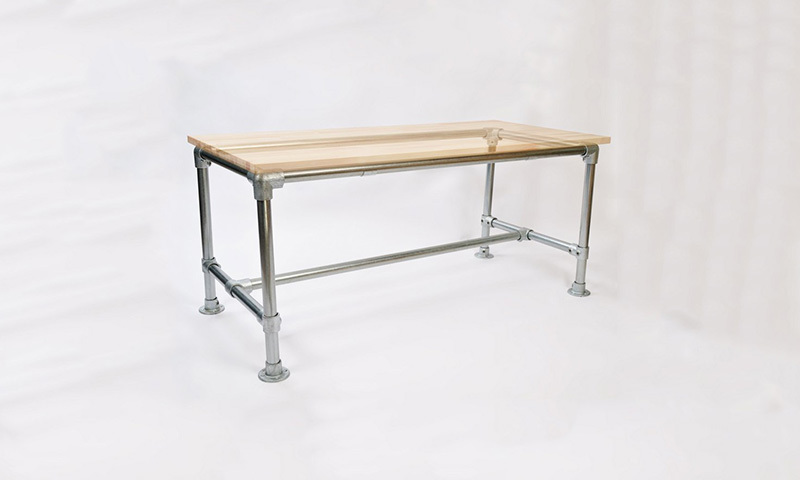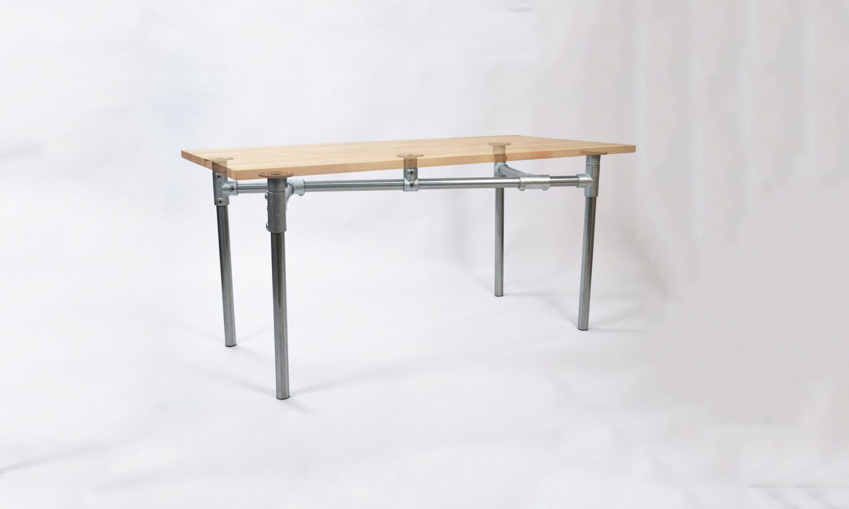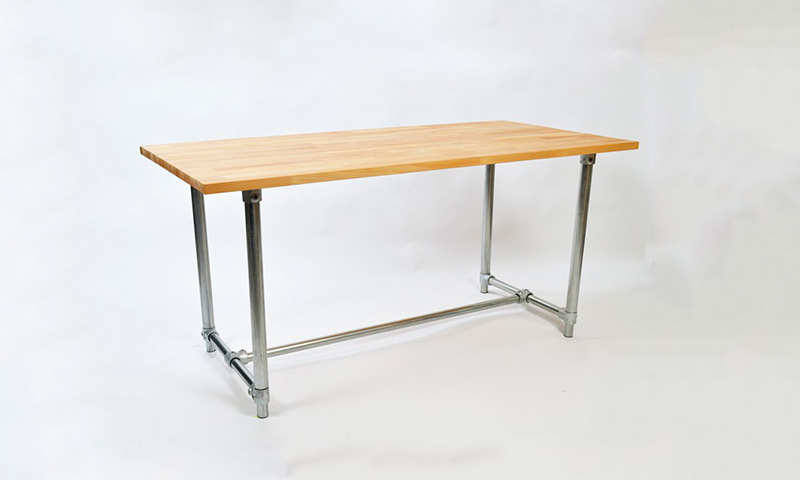DIY Desk Frame (In-Depth Guide)
Building a desk is a great way to add a splash of personality to your home or office. Depending on how many volunteers you can round up, you also get the satisfaction of building something with your own two hands or a few hands.
Whether you want to build a standing desk, the ultimate gaming setup, or a minimalistic desk, going the DIY route is a ton of fun and will give you the exact desk that you need.
So, let's get started on building a desk!
Choosing a Design for Your DIY Desk
To give you some ideas on what design may work best for your DIY desk, let's review a few of the most popular designs.
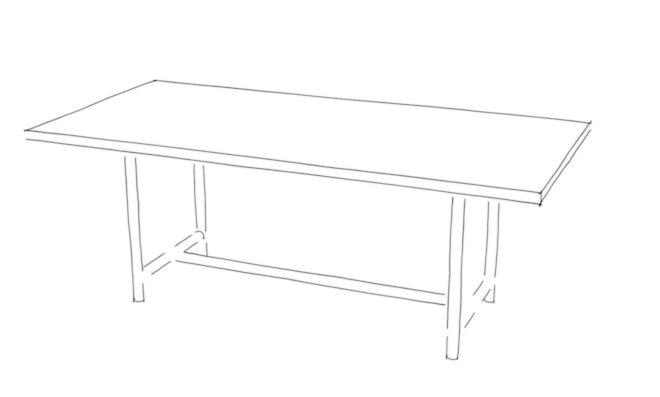
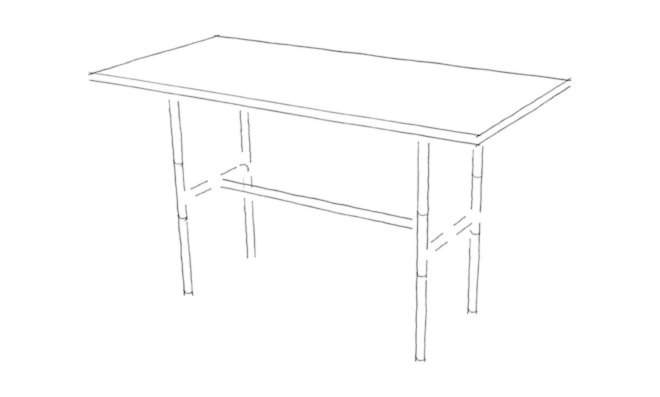
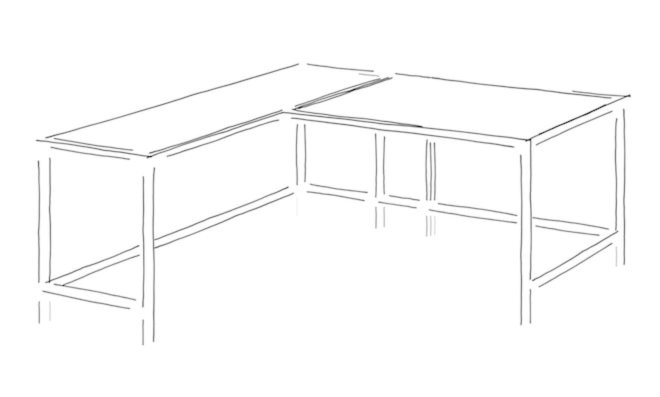
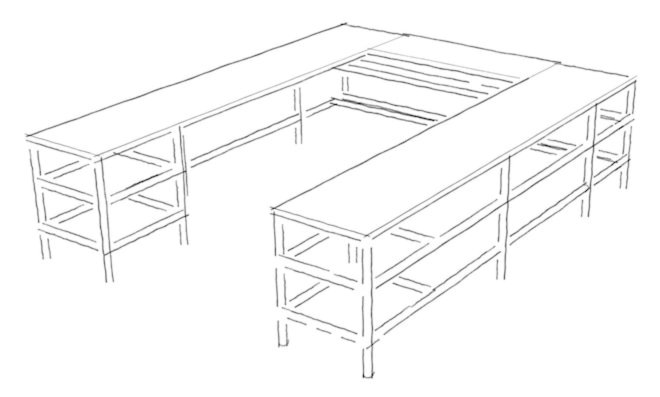
Choosing a Table Top
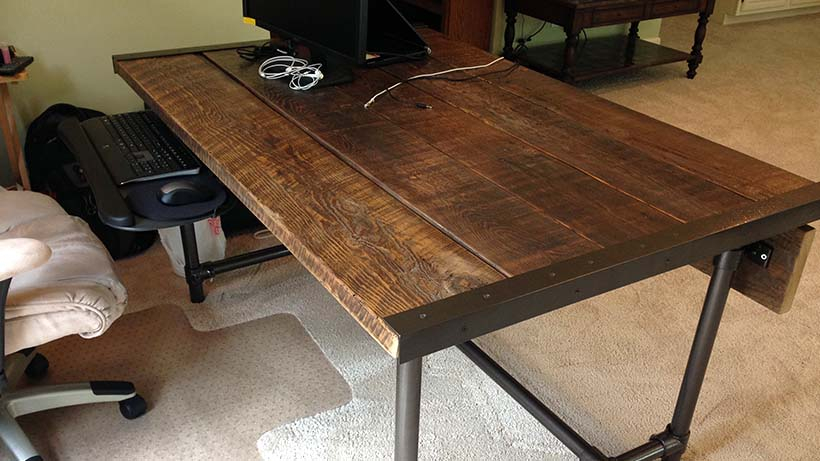
If you want to go completely DIY and build your own table top, sourcing local reclaimed wood can give your desk a unique and rough aesthetic. Andrew used reclaimed barn wood for his desk and it turned out beautifully.
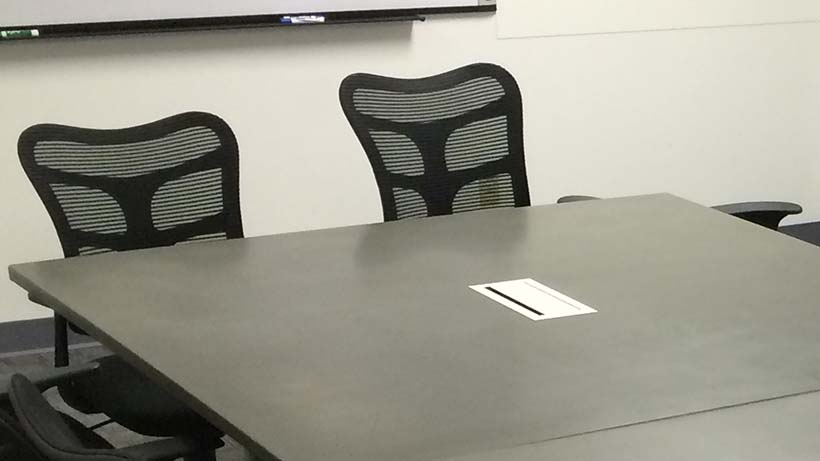
Concrete tops are also becoming more popular and can give your desk an industrial look. You can see how our team built several tables using concrete tops.
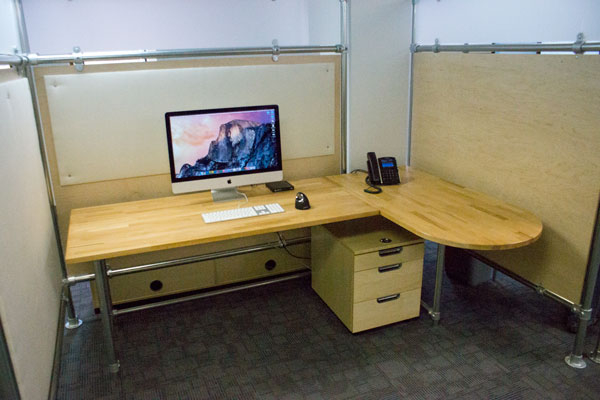
Another popular option, for those who don't want to build their table top from, scratch is Ikea table tops. They come in a wide variety of colors, textures, and shapes. Our team used the Gerton table top for many of the desks in our office. You can read more about our custom DIY desks projects.
Determining Your Desk Measurements
When building your DIY desk frame, the first thing you need to do is figure out what your dimensions are going to be. Generally speaking, this is determined by the amount of space you have available and your functional requirements.
Finding the Ideal Desk Height
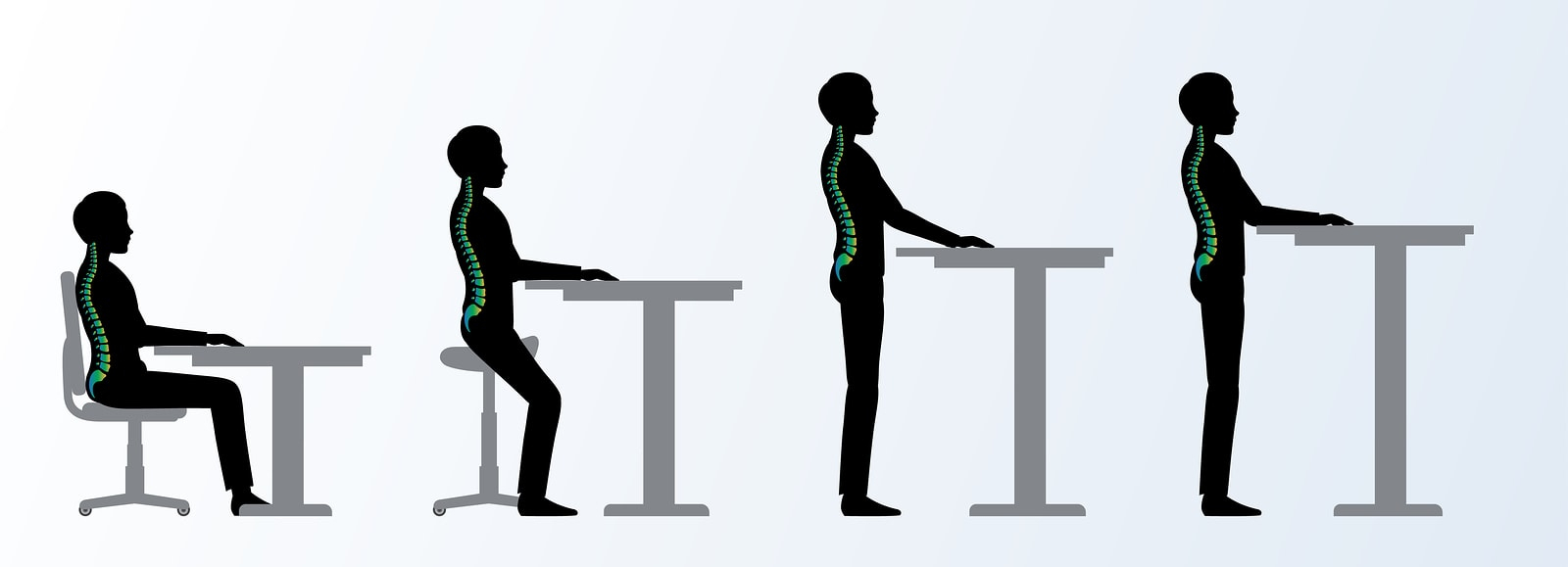
The standard total height for a table in the US is 30 inches. This standard assumes that you will only be sitting at your desk, you're of average height, and your chair is at a standard height of 17-19 inches. For most people, this is fine. But you're building a DIY desk, so why go with the norm!?
To find the ideal height for your desk, adjust your chair to where it feels comfortable or (for a standing desk) stand with your arms relaxed at your sides. Then bend your elbow at a 90 degree angle. Now get a friend and have them measure the distance from the floor to your elbow. This will give you the ideal overall height of your desk.
If you are building an adjustable height standing desk, grab the measurements for your ideal sitting height and standing height.
You should now know how tall you want your desk to be. Keep in mind, this is the overall height. This the height of the desk frame and your table top. If your table top is 1 inch thick, simply subtract an inch from your measurements to know how tall your DIY desk frame should be.
Determining the Length and Width
Depending on the design that you choose, the length and width of your desk may vary slightly. For example, if you want one wing of your L-shaped desk to be longer than the other, you will probably need two sets of measurements. One set of measures for each wing. You can then combine the lengths or widths where the two wings meet.
Most standard table tops are around 30 inches wide and 60 inches long. If you are going to be using a fabricated table top, you will probably find the most options available in these dimensions. Keep that in mind when determining your measurements.
If you are going to make your own table top, or modify a fabricated one, the length and width is completely up to you. If you are building a standard, L-shaped, or U-shaped desk, try not to go much deeper than 30 inches. You will increase your eye-strain and take up a lot of space that you will likely not utilize. Also, try not to go much shallower than 24 inches, unless you plan on adding a keyboard tray. This will ensure you have plenty of room without feeling cramped.
If you are building a curved corner desk, your desk frame will probably be a bit shallower than a standard table top. Keep that in mind as you are measuring.
Choosing the Parts Your DIY Desk Frame
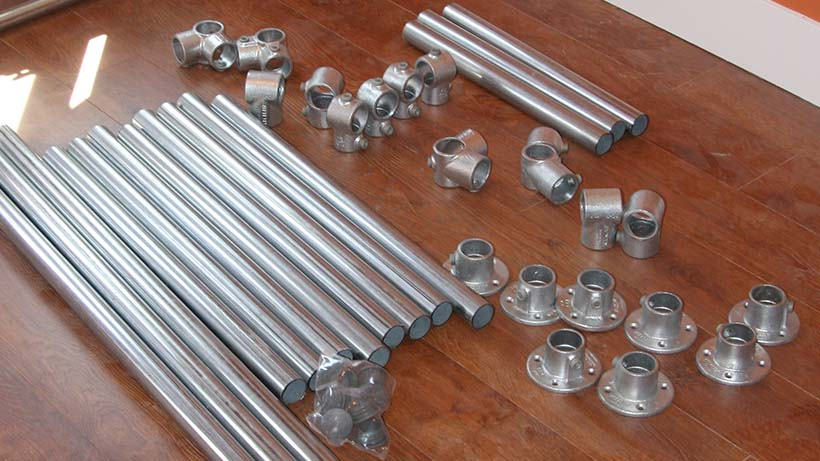
Now the fun begins! Once you have your dimensions, you can start designing the frame and picking the parts for your desk. You want to choose materials that will hold the weight of your monitor(s), speakers, mouse, keyboard, and potentially your computer case. You also need to take into account the weight of your table top. The weight of all these items adds up quickly, especially if you have a large computer.
For the desk frames featured in this project, we will be using Kee Klamp fittings. They are rated to hold thousands of lbs. and give you the freedom and flexibility to modify or adjust your desk frame. That flexibility comes in handy if your measurements are a bit off during the assembly or if you want to add something to your design. They also look pretty cool, but that's just my opinion.
Below, you will find parts lists and examples for all of the designs we have covered. All pipe lengths can be customized to fit your dimensions, just click on the pipe and adjust the lengths on the product pages.
If you need help designing your desk or simply have a question, contact our projects team.
Standard Desk Frame
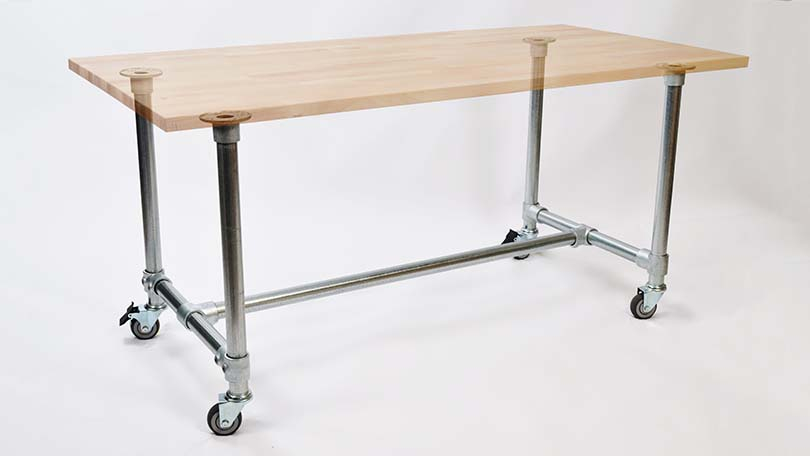
This standard desk design uses an "H" style frame. It is the simplest, and easiest to assemble. We've also added casters to the parts list below to make this desk frame easy to move around your office.
Parts you'll need
Simplify Your Desk with a Kit
We've created a few standard desk frame kits to help you build your DIY desk frame. This eliminates the need for you to go through each Kee Klamp fitting and add them individually to your cart. Just enter in your dimensions and you're good to go! We've got a few frames to choose from, so pick the one that best fits your needs and aesthetics.
Standing Desk Frame
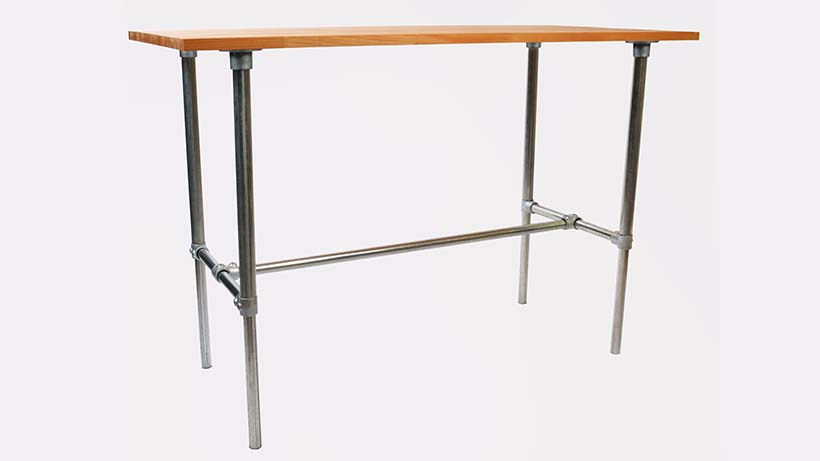
This adjustable-height standing desk frame will give you the ability to raise or lower the desk using an allen key and a little help from a friend.
If you would like a standing desk that isn't adjustable, the basic desk frame can be configured to standing height.
Parts you'll need
Simplify Your Standing Desk with a Kit
Just like our standard desk frame kits, we've created an adjustable standing desk kit to help you eliminate some of the overhead of picking all of the Kee Klamps for your desk.
Corner Desk Frame
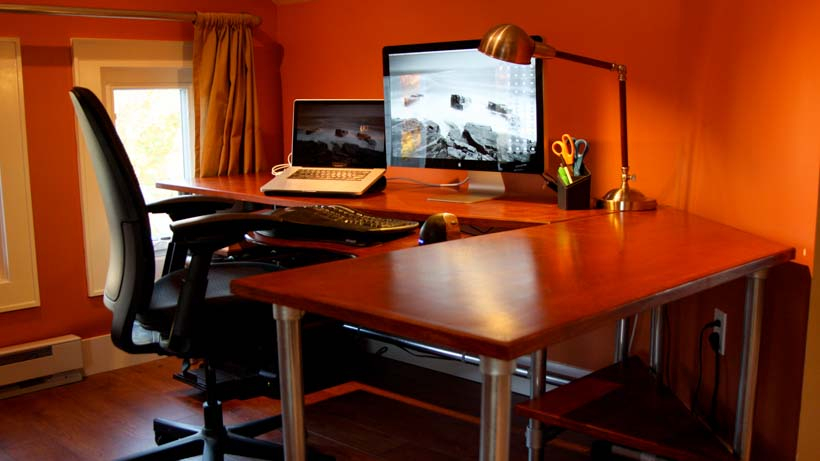
This corner desk frame parts list is taken from Chris'ergonomic corner desk project. It features the most commonly used Kee Klamps needed for a corner desk.
If you would like to customize the design, you can browse the full list of Kee Klamp pipe fittings here.
Parts you'll need
L-Shaped Desk Frame
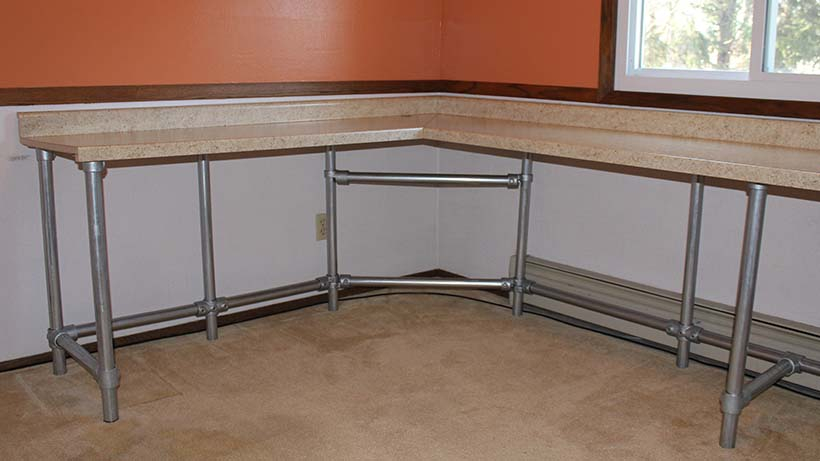
This L-shaped desk frame parts list is taken from Corey's butcher block desk project. Corey also customized his desk by spray painting his pipe black. This added more contrast between his table top and the desk frame.
Parts you'll need
U-Shape Desk Frame
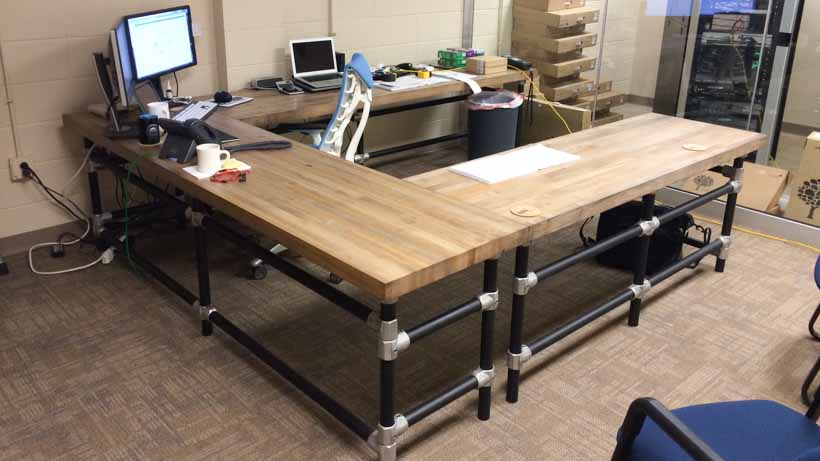
This U-shaped desk frame parts list is taken from Tyson's massive butcher block desk project. Not everyone needs a desk this beefy, but it looks incredible and allows Tyson to work on multiple workstations at a time without needing to move to multiple tables.
Tyson also opted to use Kee Lite aluminum pipe fittings. This added a bit of style to his project and cut down on the cost of shipping.
Adding Shelves or a Riser to Your DIY Desk
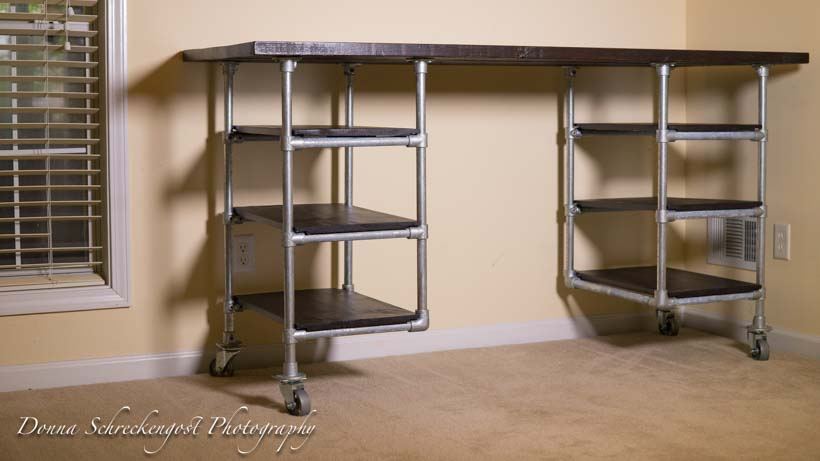
Any of the designs mentioned can have shelves added to them. The most common fittings used to add shelves to your desk are the 10 - Single Socket Tee fitting and the 15 - Elbow Fitting. The 10 - Single Socket Tee allows you to connect a horizontal pipe to your vertical pipe leg and the 15 - Elbow Fitting allows you to make a 90 degree turn, and connect your two horizontal pipes together.
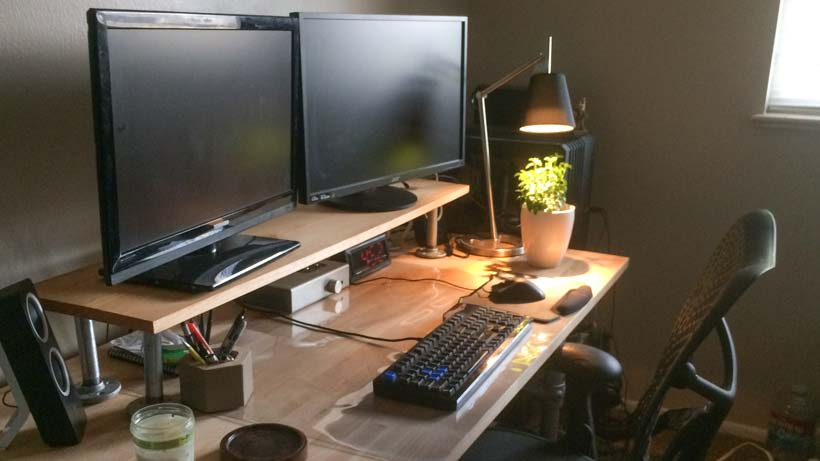
Another popular shelf choice is a monitor riser. This will raise your monitor to eye level and free up some space on your desk.
The most common design for a monitor riser utilizes four 61 - Flanges and two short lengths of pipe . One flange attaches to the top of your desk and one attaches to the bottom of your riser.
Assembling Your DIY Desk Frame
Build day is here! Before you jump into your build, here is a list of tools we recommend having on hand.
Hex Wrench Ratchet Kit
Bubble Level (to make sure your desk is level)
Drill and/or Screwdriver (for attaching your table top)
Work Gloves (safety first!)
The order of assembly is up to you, but I recommend putting together the leg assemblies first. Trust me, this will make your life easier.
After you have assembled the legs, attach the longest pieces of pipe together. At this point I also recommend checking to make sure your frame is as close to square as possible.
Finally, drill and attach your table top and check to make sure it's level.
Take Some Pictures!
After you have your awesome, new DIY desk assembled, take some pictures! I love seeing finished projects. I'm sure all of your Instagram followers would also enjoy seeing your latest creation. :)
If you need help designing your desk or have any questions about the fittings or tools used to build a desk, contact our friendly projects team. They're here to help you build the best desk you possibly can.





